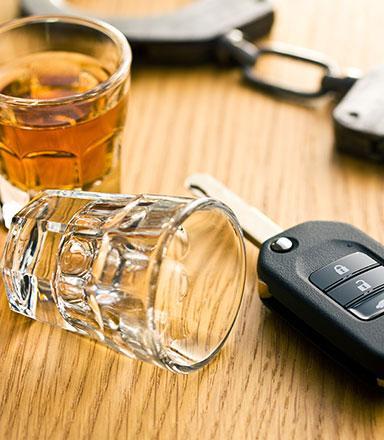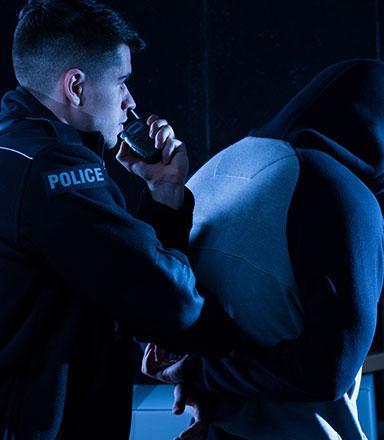Recent Blog Posts
Decreasing Rates of Property Crime
 Violent crime has seen a marked decrease in the past decades, leading many U.S. citizens to feel more secure than ever before. Just as violent crimes—such as rape, murder, and assault—have decreased in recent years, the rate of property crime has as well. Despite a national economic climate that some would say leads to a higher rate of non-violent property crime, over the five-year period between 2006 and 2010, there was more than a 12 percent drop in property crime. The 2010 rate of property crime (how many incidents per number of 100,000 residents) was about 2,9400—a marked decrease from 3,660 in 2001 and 3,350 in 2006.
Violent crime has seen a marked decrease in the past decades, leading many U.S. citizens to feel more secure than ever before. Just as violent crimes—such as rape, murder, and assault—have decreased in recent years, the rate of property crime has as well. Despite a national economic climate that some would say leads to a higher rate of non-violent property crime, over the five-year period between 2006 and 2010, there was more than a 12 percent drop in property crime. The 2010 rate of property crime (how many incidents per number of 100,000 residents) was about 2,9400—a marked decrease from 3,660 in 2001 and 3,350 in 2006.
There are several types of property theft as defined by the Bureau of Justice Statistics. These include (but are not limited to): burglary, larceny, theft, and motor vehicle theft. Burglary is the forcible breaking and entering to an unauthorized location, and usually involves charges of theft as well. Motor vehicle theft is the stealing of a car or other type of motor vehicle. Larceny is the unlawful taking of property—other than a motor vehicle—without force. That is, pickpocketing or shoplifting would be considered larceny. A charge may be increased to grand larceny depending on the value of the stolen items.
Wrongly Accused of Sexual Assault or Rape
 If you are accused of rape or forcible sexual assault, it is an allegation that has the potential to stay with you forever, even if you are acquitted of the actual crime. This is especially true for young people in universities, because of the sensitive nature of alleged sexual assault in public or private institutions.
If you are accused of rape or forcible sexual assault, it is an allegation that has the potential to stay with you forever, even if you are acquitted of the actual crime. This is especially true for young people in universities, because of the sensitive nature of alleged sexual assault in public or private institutions.
Growing Concerns
Due to several recent highly-publicized crimes in which university officials did not necessarily respond to allegations of rape with the fullest severity required by law, some colleges have attempted to go the other way, meaning that allegations of rape are treated more seriously than ever before. This is good for legitimate victims, but it can also mean that false accusations are not investigated to the fullest and dismissed as such. Often, the accused is not given a fair chance in court or campus society. While it may be particularly difficult to disprove allegations of rape on campus, this is an issue that affects all accusations of sexual assault.
Using a “Threatening” Emoji or Emoticons Could be Considered a Crime
![]() Emojis and emoticons – little symbols used to communicate on mobile devices and on the Internet – have become a language all their own. This is especially true for millennials and the up-and-coming generation, many of whom have yet to even hear the word puberty, let alone actually reach it. With this new picture-speak, there comes an entire array of challenges, some of which may extend into the justice system - so much so that some may be wondering if they really could face criminal charges just for using them.
Emojis and emoticons – little symbols used to communicate on mobile devices and on the Internet – have become a language all their own. This is especially true for millennials and the up-and-coming generation, many of whom have yet to even hear the word puberty, let alone actually reach it. With this new picture-speak, there comes an entire array of challenges, some of which may extend into the justice system - so much so that some may be wondering if they really could face criminal charges just for using them.
The Language of Emoji and Emoticon
Like words, emojis and emoticons are used to communicate. But, unlike words, which are usually pretty straightforward in their meaning, the cartoonish symbols could mean almost anything. Take, for example, a seemingly harmless wink: in one conversation, it could be interpreted as flirtatious or ironic; in another, it could be intended as an actual threat. Unfortunately, because the inferred meanings are different from one person to the next--and often even from one conversation to the next with the same person--police officers, judges, and juries have no reliable way to tell the difference between the two.
Lawmakers Propose Heavier Penalties for Threats Made to Schools
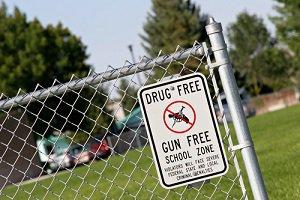 With more than 160 school shootings since 2013 – 52 of which occurred in 2015 alone – lawmakers are looking for a way to deter further violent acts and threats. This is the goal behind their latest proposed bill. If passed, it would increase penalties for those found guilty of even simply making a threat against any school, including preschools, primary schools, high schools, and higher education schools.
With more than 160 school shootings since 2013 – 52 of which occurred in 2015 alone – lawmakers are looking for a way to deter further violent acts and threats. This is the goal behind their latest proposed bill. If passed, it would increase penalties for those found guilty of even simply making a threat against any school, including preschools, primary schools, high schools, and higher education schools.
Recent “Wave” of Threats Prompted New Bill
According to the chairman of the House Judiciary Committee, Stamford Democratic Representative William Tong, several bomb threats have recently been made against schools throughout the state of Connecticut. All prompted complete evacuations, causing needless panic among students, staff, and police. Senator Tony Hwang of Fairfield, also in support of the bill, says the threats have gone above and beyond simple childhood pranks.
Examples of Money Laundering in Connecticut
 The idea of money laundering can seem like a very complex crime left mostly to the mafia or executives of high-powered companies. It does not seem like a crime that would be one commonly perpetrated by everyday people or workers. In fact, money laundering encompasses several different types of financial crimes, which are often committed by everyday citizens. The Internal Revenue Service (IRS) is responsible for investigating allegations of money laundering, though cases are prosecuted in the judicial district in which the defendant was accused of the crime.
The idea of money laundering can seem like a very complex crime left mostly to the mafia or executives of high-powered companies. It does not seem like a crime that would be one commonly perpetrated by everyday people or workers. In fact, money laundering encompasses several different types of financial crimes, which are often committed by everyday citizens. The Internal Revenue Service (IRS) is responsible for investigating allegations of money laundering, though cases are prosecuted in the judicial district in which the defendant was accused of the crime.
Hidden Revenue Streams
The obvious type of money laundering is when large organizations, usually criminal in nature, hide profits from unsavory businesses, such as the drug trade, prostitution, or the black market for stolen goods. This money is often hidden in offshore accounts or in assets such as expensive cars and property.
Vehicular Manslaughter Charges in Connecticut
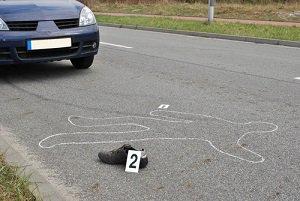 Determining the most common causes of death in the world is a challenge, one that varies wildly depending on the reporting agency, year, and country. Yet vehicular manslaughter is one that consistently makes the lists year after year, even as other major health crises are addressed and subverted.
Determining the most common causes of death in the world is a challenge, one that varies wildly depending on the reporting agency, year, and country. Yet vehicular manslaughter is one that consistently makes the lists year after year, even as other major health crises are addressed and subverted.
Vehicular manslaughter is defined as the unintentional murder of someone while behind the wheel of a car, usually caused by reckless driving or gross negligence. Driving over the speed limit may be considered gross negligence, and thus the vehicular manslaughter charge could be treated as a misdemeanor. Conversely, if the person behind the wheel was drunk at the time of accident in which someone was killed, the charge will likely be a felony because the circumstance in which the person was driving was illegal from the beginning.
In Connecticut, a vehicular manslaughter conviction automatically carries a one-year license suspension and a two-year period in which the person must use an ignition interlock device in his or her car. A large percentage of vehicular manslaughter cases are the result of drunk driving. In Connecticut, this is considered second degree manslaughter, and carries the punishment of a Class C felony, punishable by one to ten years in prison and/or up to a $10,000 fine. Between 2001 and 2010, there were 191 second degree manslaughter convictions of this nature in the state.
Understanding the Legal Implications of Shoplifting in Connecticut
 Some people steal merchandise from a store because they are unable to afford the item they want or need. Others do so for the thrill, excitement, or adrenaline rush. And then there are those that shoplift for the sake of committing another crime, such as selling the goods in exchange for cash. Whatever the reason behind the act, shoplifting (otherwise known as larceny) is a crime with potentially far-reaching implications for those convicted.
Some people steal merchandise from a store because they are unable to afford the item they want or need. Others do so for the thrill, excitement, or adrenaline rush. And then there are those that shoplift for the sake of committing another crime, such as selling the goods in exchange for cash. Whatever the reason behind the act, shoplifting (otherwise known as larceny) is a crime with potentially far-reaching implications for those convicted.
Shoplifting Defined
Although shoplifting might seem like a pretty straightforward charge, it actually covers a large array of potential acts, including:
- Removal of goods from a merchant's establishment,
- Concealing goods with the intent to remove from a merchant establishment,
- Altering or removing labels or price tags of goods at a merchant establishment,
Police-Related Racial Disparities Still Exist in Connecticut
 Although efforts have been made to decrease the police-related racial disparities, new information indicates they are still present. In fact, according to the Associated Press, preliminary data indicates that officers fired stun guns at blacks and Hispanics suspects at a rate higher than white suspects last year. Officers are warning citizens not to be overly alarmed at the information because differences between departments and cities can make it difficult to compare percentages, but experts say they are still concerned.
Although efforts have been made to decrease the police-related racial disparities, new information indicates they are still present. In fact, according to the Associated Press, preliminary data indicates that officers fired stun guns at blacks and Hispanics suspects at a rate higher than white suspects last year. Officers are warning citizens not to be overly alarmed at the information because differences between departments and cities can make it difficult to compare percentages, but experts say they are still concerned.
Stun Gun Risks
For the most part, stun guns cause only minor injuries, including the need for removal of the prongs that deliver the shock. However, Amnesty International reports that at least 540 people in the United States have died after being shocked by a stun gun between the years 2001 and 2012. In Connecticut, 17 people have died since 2005, and 12 of them were minorities, the American Civil Liberties Union of Connecticut now says. So, while this is, overall, a very small percentage, the information does indicate a very real risk of stun gun death, particularly among minorities.
Hate Crimes Against People with Disabilities
 Hate crimes are largely considered those perpetrated against certain groups or individuals, motivated by the victim's religion, race, or sexual orientation. Indeed, the most widely-publicized incidents labeled as hate crimes are those in which a person is distinctly vocal about his or her disdain for a certain group of people and its beliefs, creeds, or private activities. Yet hate crimes can also be perpetrated against groups of people with disabilities, whether they are primarily physical. mental, or emotional in nature. In fact, studies show that people with learning disabilities are more vulnerable than others to experience bullying, harassment or to be victims of hate crime. In 2007, for example, 79 of the total hate crimes reported nationwide were committed against people with disabilities, a marked increase from the 44 hate crimes against people with disabilities that were reported in 2003.
Hate crimes are largely considered those perpetrated against certain groups or individuals, motivated by the victim's religion, race, or sexual orientation. Indeed, the most widely-publicized incidents labeled as hate crimes are those in which a person is distinctly vocal about his or her disdain for a certain group of people and its beliefs, creeds, or private activities. Yet hate crimes can also be perpetrated against groups of people with disabilities, whether they are primarily physical. mental, or emotional in nature. In fact, studies show that people with learning disabilities are more vulnerable than others to experience bullying, harassment or to be victims of hate crime. In 2007, for example, 79 of the total hate crimes reported nationwide were committed against people with disabilities, a marked increase from the 44 hate crimes against people with disabilities that were reported in 2003.
End of Year Study Finds Use of Death Penalty on the Decline, Less Popular Among Citizens
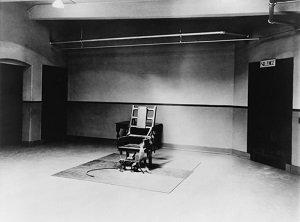 Older than America itself (significantly older, really), the death penalty has always been largely supported by U.S. citizens. However, there is evidence that suggests that the tides may be shifting. In fact, if recent changes to state laws and a poll conducted by Gallup and the Pew Research Center are any indication, capital punishment may eventually become a thing of the past.
Older than America itself (significantly older, really), the death penalty has always been largely supported by U.S. citizens. However, there is evidence that suggests that the tides may be shifting. In fact, if recent changes to state laws and a poll conducted by Gallup and the Pew Research Center are any indication, capital punishment may eventually become a thing of the past.
Support for the Death Penalty at Nearly a 40-Year Low
Support for the death penalty in the United States reached its peak in the 1980s and ‘90s. It now sits somewhere between 56 and 61 percent, according to the 2015 study. While still considered to be the majority, this number marks a steady and continuous decline since the peak period. And, according to the Washington-based Death Penalty Information Center, this number also places support for the death penalty at nearly a 40-year low.

